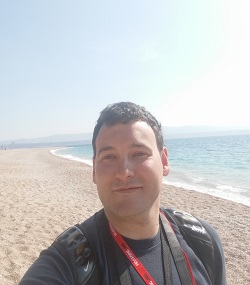If you are staying in Split for a week or longer, there are many day trip options. Everyone is talking about Trogir, Sibenik NP Krka, and islands Brac and Hvar. But for those who like exploring archeological sites from the ancient Roman times, Solin (Salona) is the top destination. Having open-air museum which features reconstruction of a former Roman town, Salona is an absolute hit for all travelers interested in history. Many will say that Salona has the same meaning for Split as Pompeii has for Naples.

Table of Contents
How to get to Solin
Today's Solin is located along the river Jadro, 10 kilometres north of Split. The town can be easily reached by car or local bus line number 5 operated by Promet Split.

Things to do in Solin
When you arrive in Solin, you will immediately feel its charm and intimacy. In the centre of the city, there is a large green lawn where children play. Due to its hospitality towards children, Solin is a favourite place for many young families who are establishing their homes in the town.

There are several coffee bars in the town centre where you can take a favourite drink or an ice cream. There is Church of Our Lady of the Island, the central parish of Solin. The atmosphere of the town is very enjoyable, and I got the impression that Solin is a nice place to live in.

An additional grace to the atmosphere of the town is created by the sound of the river Jadro, which passes through the centre of Solin. Jadro supplies Split and its surroundings with drinking water.

If you walk a few minutes towards the north of Solin, you will notice the former Solin watermill called Gaspina Mlinica. It is an architectural achievement from the 18th century. Grain was obtained until the 20th century when the mill was shut down. Today it's a nice tourist attraction.

As you continue walking, you will notice the remains of the former church of St. Moses and Peter, which is today called the Hollowed Church. It was built in the 11th century. It's famous for the fact that Croatian king Zvonimir was crowned there. That's the reason why Solin is called Zvonimir's town.

Salona
Salona, as we've already called it an open-air museum, is located one kilometre away from the centre of Solin. It can be reached by walking or by car. If you are walking, take a street called Put Salone. Additionally, I recommend wearing sneakers instead of flip-flops for a more comfortable movement while exploring the locality.
The ticket price for an adult for visiting Salona is around 7 euros.
As soon as you arrive at the Salona, you will notice at first glance that this is a magnificent and original place. Many archaeological exhibits are located exactly in their real place, where they existed during history.
The first place of interest is the early Christian city of Salona. In the former city centre, there were two basilicas, the bishop's palace, and two Christian oratories where the first Christians were meeting for the prayer. It was a secret place at that time since Emperor Diocletian persecuted Christians.


A few meters below there are the remains of a former Roman spa. You can see the reconstruction of all the rooms that were located in the spa. The water was heated in a traditional way, using a fire.


North of the walls of Salona, there are the remains of an early Christian Salonitan shrine. This place is known as the tomb of the most famous Salonitan bishop St. Dujam, whose sarcophagus was moved to Split Cathedral a few centuries later.
Just near this locality, there is a building called Tusculum, which is a small museum and courtyard that serves as a venue for the events of the Solin Cultural Summer.


If you continue walking down Put Salone Street, you will come to two more sites. The first is the remains of the oldest Salona's basilica built in the 4th century. It was constructed over the tombs of 4 martyrs who were killed in 304, during the persecution of Christians: the priest Asterius, Antiochianus, Gaianus, Paulinianus and Telius.

The last one is the Roman Amphitheater, probably the most interesting exhibit of whole Salona. It was built in the 2nd century. It was used for gladiators who were fighting against each other, and for a fight between beasts and gladiators. The auditorium could seat 17000 people.
Many of Salona's martyrs, the most famous of which is St. Dujam, were killed in the amphitheatre, during the reign of Diocletian.
In the 17th century, the Venetians, who ruled Solin and Dalmatia at that time, decided to demolish the amphitheatre due to strategic reasons and for defence against the Osman Empire. Therefore, we can only see the remains of the amphitheatre.










